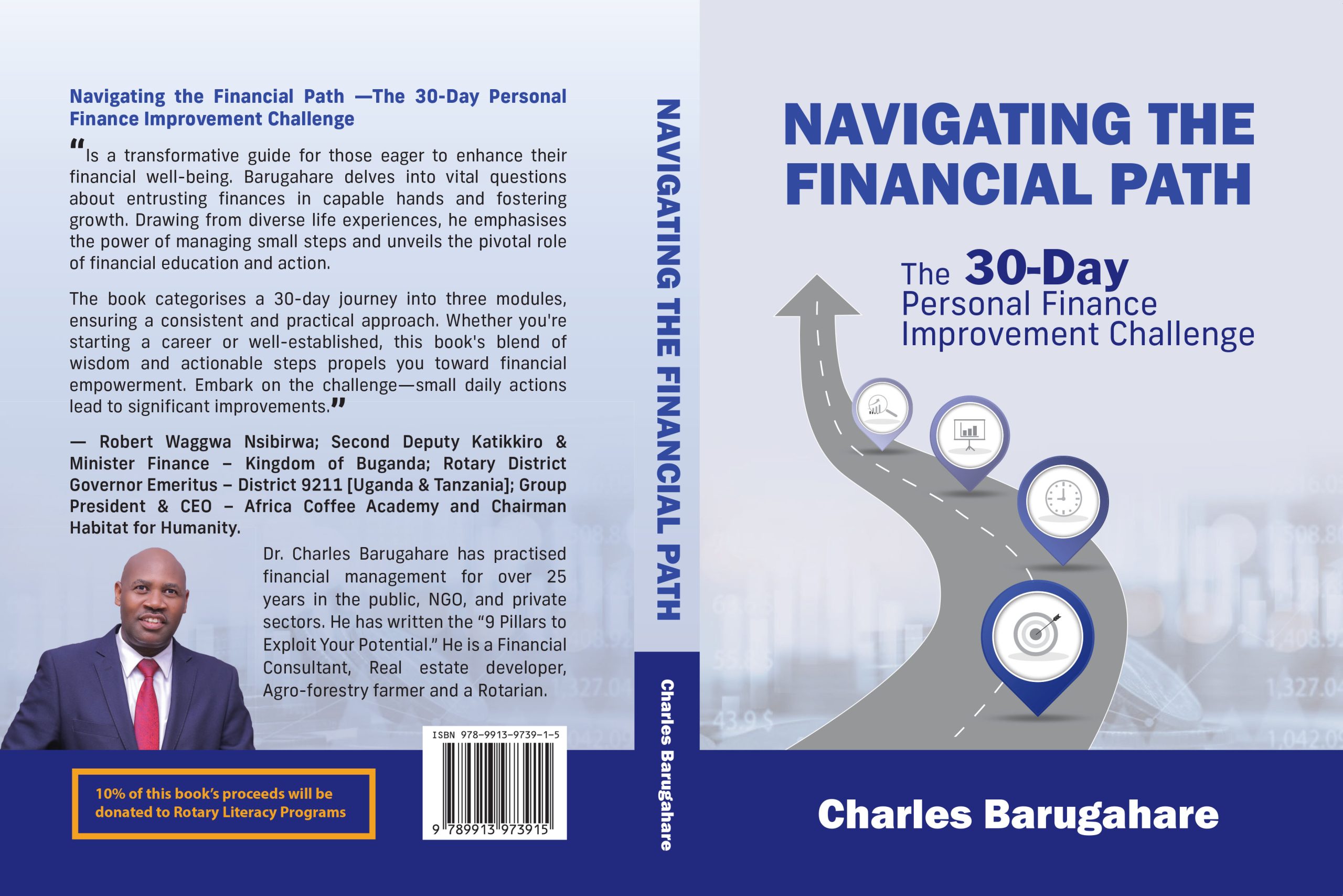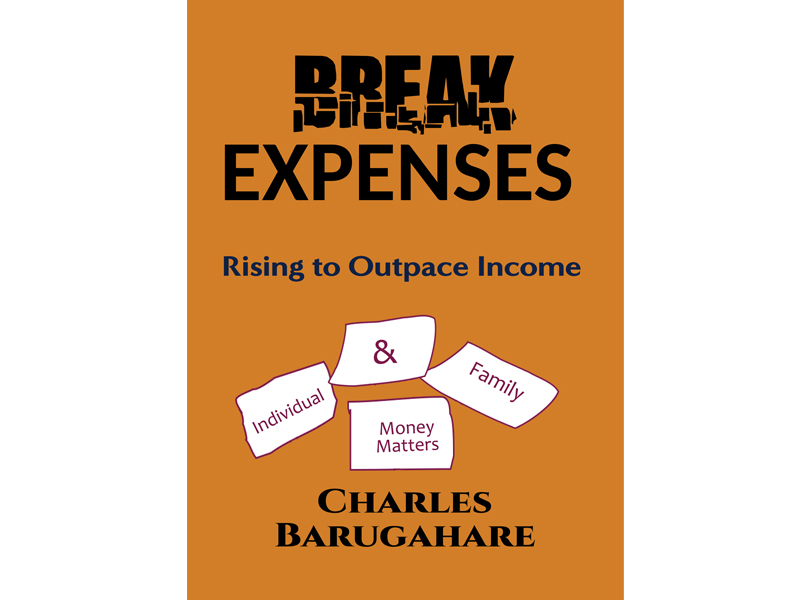Currently Empty: UGX 0

 Admin
Admin- June 20, 2025
- Comment 0
Why does budgeting particularly for employees or individuals in fast changing times matter? At the Rotary District Conference, I had an evening with a Rotarian from Tanzania and you know that’s the time I launched my book— Navigating the Financial Path: The 30-Day Personal Finance Improvement Challenge.
He said something about budgeting that stuck with me. He said the day he realized that most of his money was spent on wants which was embarrassing, was the very day he looked out for away to categorize his expenses into basic needs, wants and safety needs. I challenge you to categorize your expenses of this month into the 3 categories. You will be amazed at what you will find.
Turning to building a budget that bends not breaks, let’s examine the fundamentals: The 3Ps of budgeting, why traditional budgeting struggle in volatile environments and how to deal with budgeting in fast changing times.
So, let’s delve in:
Table of Contents
Toggle1. The 3Ps of Budgeting: Paycheck, Prioritize and Plan
a. Paycheck: What are you really working with. In a coaching session, I asked a lady, how much she was earning? She said 5million Uganda Shillings. I asked net or gross, she said what do you mean? When we worked through the figures, she was earning around 3million take home. A number of issues arise here around understanding your paycheck:
- Is the income gross or net pay as just illustrated above but more importantly, she said all people around her knew that she earned shillings 5 million when she actually earned shillings 3million. She noted further that her perception that she earned shillings 5million had stretched her to commit for obligations she did not have money for.
- What is the source of your pay check – is it salary or business income: salary income is more fixed and predictable in the short run while business income varies significantly in terms of how it is earned and therefore spent. Did you know that how the money is earned influences how it is spent? Salary money tends to be spent more on consumption while business income tends to be used more for growth and investment. So, be cautious not to be trapped.
- Is your income passive or from direct effort. It is much easier to spend passive income than had earned manual effort This awareness helps you to treat all your income better.
- The way you spend income from allowances, tips or gifts vary significantly from other income sources because of how it is earned. This differentiation causes efficiencies or inefficiencies in how you manage your money.
You are encouraged to:
- Spend time to understand what hits your account after taxes, social security, insurance and other deductions, inclusive of allowances, tips and any other income.
- Don’t share your income details to your peers, if you chose to, share the accurate figures.
- Understand all your sources of income and treat all of them with care and discipline.
- Track all income to specifics and treat all income with same respect while using it.
b. Prioritize: Use your money on what matters most. Use the CDF method – Choice, Decision and Focus.
- Choice – helps you to ask and clarify what matters most in regards to how you want to use and grow your money. What are your financial goals? Which expenses are of high, medium or of low impact to your goals. What can you say YES or No to in regard to your money.
- Decision – define and decide on what goes into your short-term and long-term priorities, in other words, do you want more security, freedom and comfort in the future, then spend less on consumption and prioritize investments, in short spend less on wants. The 50/30/20 budget rule can help guide your budget allocation decisions. Basic needs are the non negotiable or compulsory expenses for survival which should take up to 50% of your income. They include rent, groceries, utilities, clothing, transportation, fees etc. Wants are life style enhancers, they are optional expenses aimed at improving comfort and enjoyment but not a must have and should fit within 30% of your income. They include dinning out, subscriptions to Netflix, gadgets and fashion accessories, vacations, contribution to functions, gym and so forth. Safety needs (savings, investments, emergencies, medical insurance, compulsory debt repayments etc) should fall within 20%. You are advised to make decisions that are in line or support your financial goals.
- Focus – helps you to keep aligned to your priorities. It prevents disruptions and impulse spending. It helps you stick to your budget because you have made a decision on what you are working towards and the trade-offs you are willing to make. The power of focus is a filter, for instance, you are saving and investing for school fees, focus reminds you that a new phone or car is not a priority. Focus keeps you alert and motivated to your budget and goal.
c. Plan: Set out what you want to do with your money with clear short and long term goals. You now know your paycheck, you have made your priorities, a plan is a clear step-by-step guide on how to use your money (paycheck) on your priorities. The plan structures your money to your priorities so that you can track, monitor and take control of it.
Short term plan deals with goals falling into 0-12 months period. This plan focuses on supporting daily life to meet basic needs, wants and safety needs but it’s the foundation for long term goals. How you earn, spend and invest in the short term influences how your long-term plan will be like.
For instance if your plan is to build an emergency fund as caution cover of your basic needs for 3 months as your short term goal. Then, you chose and decide on how much to save and invest to achieve your goal in 12 months. To put it into perspective, if your net pay is shillings 1,500,000 per month and 50% is the fraction allocated to basic needs, then, you need to put aside shillings 2,250,000 per a year as your emergency fund to cover 3months of basic needs. Now that you know how much you need as your emergency fund for a year, you can chose from following options;
- Divide the amount by 12 to determine how much you need monthly, in this case you need shillings 187,500 per month.
- You can chose to save and invest it quarterly, in that case, you need shillings 562,500 per quarter.
- The bottom line is that at the end of 12 months, you need shillings 2,250,000 as your emergency fund.
Long-term plan deals with goals that fall into 1 – 5 years. These are big picture goals, and require time, consistency, and planning to achieve them. For instance in 5 years, you may target an emergency fund of 6 months of your total expenses put aside as emergency money. You can use the same approach as for short term but do it for a long period or consider another approach. Like Shauna Shapiro once said, “what you practice grows stronger”
2. Why traditional budgeting struggle in volatile environments
Traditional budgeting is challenged when most things are changing very fast as illustrated in the following cases;
Promotes “Use It or Lose It” practice. Towards the end of the year, individuals or teams in organizations rush to spend to finish their budgets. True or false? At individual level, the budget may encourage spending for the sake. For instance, if you plan to spend UGX 200,000 having fun with your friends a month but instead spend UGX 100,000 that month, you are encouraged to push in another evening out. However, you can save it, or roll it over to the next month or use it to fill the gap where you overspent in another expenditure item but that’s not normally the case because of the “Use It or Lose It” practice.
The budget is rigid and inflexible. Most budgets are annual, hence fixed and don’t easily adapt to changes. This explains why government has several supplementary budgets to largely deal with occurrences proactively. And so, are individuals not budgeting or not following their budgets. Is this why you don’t make or follow your budget? There is a way out.
Budgets are normally built on previous performance that may no longer apply. There is this sad story. A timber seller exported 50 tons of timber in 2022, 80 tons in 2023 and had projected to export 100 tons in 2024 but exported zero due to government policy change burning exporting raw timber. So, building budgets from previous projections can be quite challenging. Is there a way out? Yes, we will delve in it.
May discourage innovations outside the approved budget. Why innovate when you know it will not be funded. You or your team may not think about new initiatives outside the budget when you well know that they will not be supported. So, traditionally as a company or individual, when you know you will handle certain transactions that come into play during implementation, why budget then. It can be discouraging right?
3. How to deal with budgeting in fast changing times
Build flexibility in your budgeting: This is because conditions may change rapidly —think of inflation, supply chain disruptions, or regulatory changes. So, allow for strategic budget adjustments in your planning.
Prioritize essential spending: Be aware that resources may be tight at some point yet critical activities must continue to run. So, identify them at budgeting stage as they are necessary to maintain operations and nurture growth. Some people call this scenario planning. You can use DSP approach;
- Delay certain items.
- Scale back on non essentials.
- Protect the core to thrive.
This way, you have options in your budgeting.
Create a budget provision for new ideas, research or emerging opportunities: This will provide a safety net for ideas to thrive but may be abused if not controlled well.
Create a simplified process for assessing and prioritizing innovative ideas: Innovations or new ideas may arise when the budget is completed. For instance, if a new customer solution emerges mid-year, the leadership encourages reallocating funds from a lower-priority area to test and implement it quickly.
So, in short, you need to:
- Allow for periodical update of financial projections instead of holding on to a fixed annual plan. It will help keep your budget aligned to current priorities. If for instance income reduces, quickly adjust and guide on spending.
- Include budget contingency to allow for quick response subject to justification. You may include 5-10% provision but for core and strategic expenses.
- Separate core or priority expenses from discretionary or optional expenses. This allows ease to cut out or shift funds when necessary.
- Use scenarios in your budgeting. Consider best, moderate and worst case scenarios. What this means is that if costs rise or income reduces, you already have options or backup plan.
- Try to use current information or customer projected trends to inform your budget. For instance, for fuel, instead of using previous years fuel price, update to current price and factor fuel volatility.
- For key aspects of your budget, justify every projected income and expense. Show how the expenses support your operations and whether they can be avoided or not.
You want to learn more about budgeting, join the webinar on budgeting in fast changing economic times, on 25th June 2025 at 6.00PM with panelists: Lilian Katiso FCCA, CFO on Call, Charles Barugahare FCCA, Founder FinanceLIP, moderated by Dr. Robinson Isaac Ogwang.



